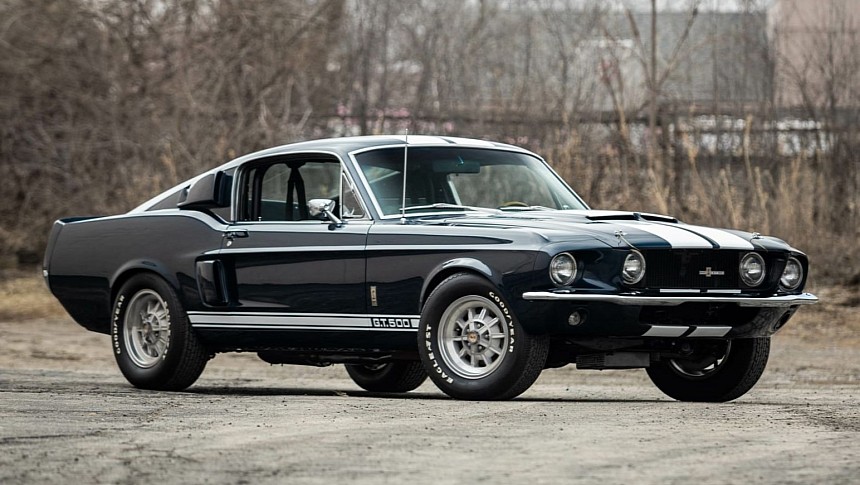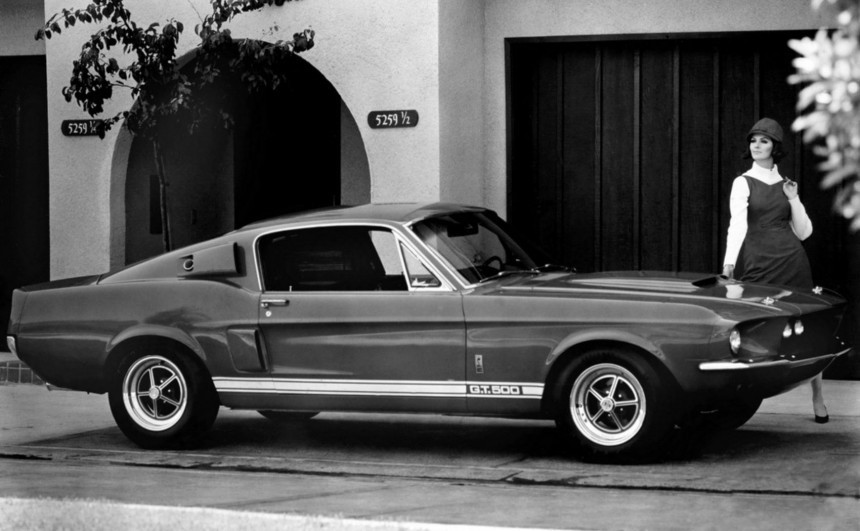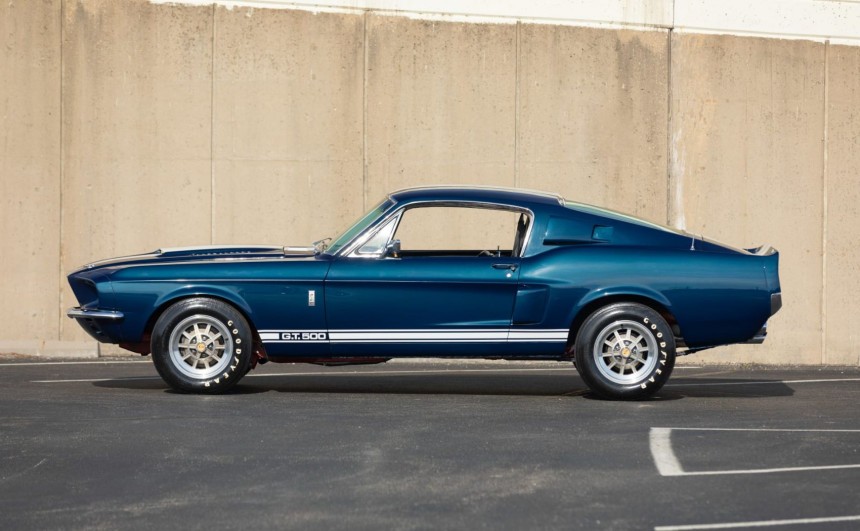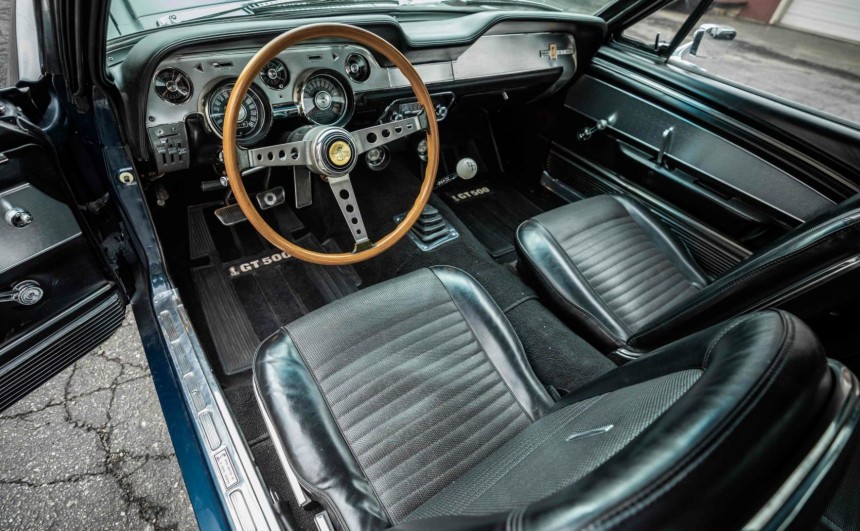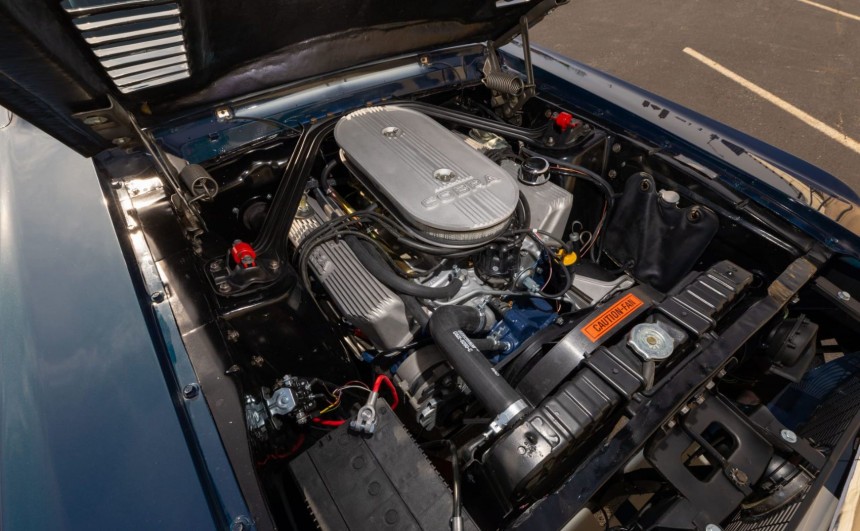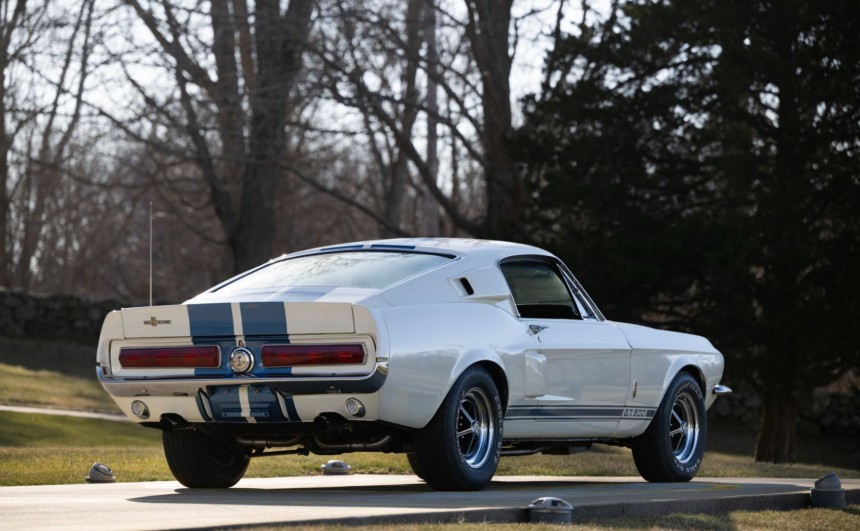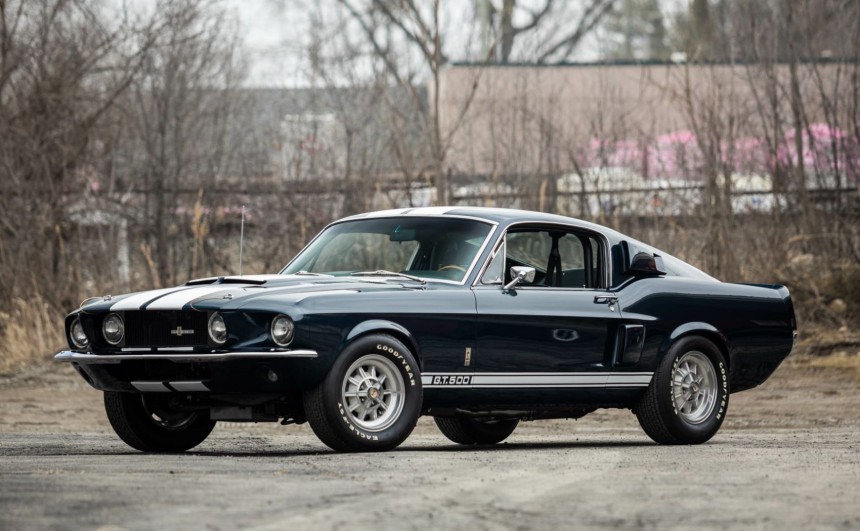Shelby called the Mustang "a secretary's car" and wasn't very fond of it, but despite this, he transformed the plebian pony car into an automotive legend.
By the 1960s, the grand tourer (Grand Turismo in Italian) was the most popular type of vehicle among enthusiasts.
Defined as a car designed for high-speed yet comfortable long-distance driving, a GT combined performance and upscale features like no other type of vehicle.
Though it had the European GT looks, the original Mustang, introduced at the 1964 New York World's Fair, was far from a legitimate GT.
In 1965, the 'Stang received a new fastback body style and the optional GT Equipment Group that brought more upscale features and better performance, but it still fell short of rivaling European GTs.
However, the pony car would finally fit the bill two years later, thanks to Carroll Shelby and his legendary Venice crew.
The former Le Mans-winning race driver turned engineering wizard initially struck a deal with Ford to source engines for his Cobra roadsters.
By 1964, Shelby was given the reigns of the slumping GT40 project, which he and his Shelby American team would transform into a Ferrari-slaying, two-time Le Mans-winning race car.
But prior to the Le Mans triumph, Shelby was asked to help develop a high-performance version of the Mustang that the public was demanding.
The result was the 1965 GT350, a lightweight, bare-bones 'Stang powered by a highly-tuned, 289-ci (4.7-liter) HiPo capable of 306 hp.
Though it was a resounding success on both the showroom floor and the race track, where GT350Rs embarrassed Corvettes, Shelby wanted to turn the Mustang into a legitimate grand tourer.
The chance to do so came before the 1967 model year when the Texan was given the go-ahead to develop it.
Unlike the GT350, which was based on a stock fastback shell, the new model, dubbed GT500, received a comprehensive visual makeover to appease Shelby, who wanted it to stand out from any other Mustang.
Ford stylist Charles McHose and clay modeler Joe Ferrar helped design the heavily upgraded model, while Shelby American's master fabricator, Jerry Schwarz, turned it into reality.
When viewed from the front, the GT500 featured an elongated fiberglass front end, a new scooped hood, and a large grille with built-in fog lamps.
On each side, the car distanced itself from the average Mustang thanks to functional air scoops fitted in front of the rear wheels and side windows.
At the rear, the new Shelby received a fiberglass deck lid with an integrated spoiler and a pair of sequential taillights borrowed from the Mercury Cougar.
Inside, the bare-bones recipe used to cook up the lightweight GT350 was abandoned in favor of a fully-trimmed interior courtesy of Ford's GT Equipment Group.
Therefore, the GT500 came with standard vinyl buckets, a foldable rear seat, a wood-rimmed steering wheel, and polished metal trims. Moreover, air conditioning was now available, albeit as an optional feature.
Unique to the cockpit were Cobra badges found on the steering wheel and passenger side of the dash, as well as a standard two-point, padded roll bar, much like the one found in the GT350.
Since Carroll Shelby was busy kicking Ferrari's behind at Le Mans, he handed the 1967 GT350 and GT500 projects to chief engineer Chuck Cantwell, with specific instructions for the latter's powerplant.
While the GT500 looked like a legitimate grand tourer inside and out, it had to back those looks up with impressive performance.
Therefore, it received a humongous 428-ci (7.0-liter) V8 derived from an FE unit with the same displacement dubbed Police Interceptor.
Christened Cobra Le Mans to celebrate the GT40's success, the engine typically used in full-size law enforcement cars received a host of performance-oriented goodies like a medium-rise aluminum intake manifold and a pair of Holley 600-cfm four-barrel carbs.
According to the marketing literature, the custom engine was rated at 355 hp and 420 lb-ft (569 Nm) of torque, but when put on a dyno, it delivered sensibly more.
It's worth noting that before developing the Cobra Le Mans, Shelby and Ford considered stuffing a street version of the actual 427 Le Mans side oiler into the GT500. Some cars were built with that engine, and several others received it via a dealer-installed upgrade.
Shelby also built a single GT500 with an authentic GT40 engine. Called Super Snake, it was conceived for promotional purposes and nearly made it into a limited-production version.
Thanks to the huge Cobra Le Mans engine, the GT500 could sprint from 0 to 60 mph (97 kph) in 6.5 seconds and run the quarter mile in 15 seconds flat.
Along with the engine's output rating, those figures made the GT500 the fastest, most powerful Mustang available in 1967.
Furthermore, the stiffer front springs, thicker anti-roll bar, Gabriel shock absorbers, and standard front disc brakes made it the best-handling 'Stang developed until that point.
Whether or not Shelby successfully transformed the Mustang into a legitimate grand tourer with the 1967 GT500 is debatable today.
While it had the looks, upscale features, and performance figures to state its case, some enthusiasts argue that its maneuverability (although improved over the standard 'Stang) was far from the period's Euro GTs with their advanced, fully independent suspension systems.
Nevertheless, the 1967 Shelby GT500 was a resounding success, with dealerships selling no less than 2,048 units - despite being nearly twice as expensive as a standard Mustang.
Nearly six decades after it was introduced, the original GT500 is considered one of the most legendary models in the history of the American automotive industry.
It turned the plebian Mustang into a legitimate grand tourer (or, at least, came awfully close) and set the standard for all future high-performance pony cars.
In terms of current value, a 1967 GT500 is prohibitively expensive, with low-mileage examples in excellent condition going for well over $200,000.
For more on this Shelby legend, we recommend watching the YouTube video below by The Gearhead Lounge.
Defined as a car designed for high-speed yet comfortable long-distance driving, a GT combined performance and upscale features like no other type of vehicle.
Though it had the European GT looks, the original Mustang, introduced at the 1964 New York World's Fair, was far from a legitimate GT.
In 1965, the 'Stang received a new fastback body style and the optional GT Equipment Group that brought more upscale features and better performance, but it still fell short of rivaling European GTs.
However, the pony car would finally fit the bill two years later, thanks to Carroll Shelby and his legendary Venice crew.
The origins of the Shelby Mustangs
By 1964, Shelby was given the reigns of the slumping GT40 project, which he and his Shelby American team would transform into a Ferrari-slaying, two-time Le Mans-winning race car.
But prior to the Le Mans triumph, Shelby was asked to help develop a high-performance version of the Mustang that the public was demanding.
The result was the 1965 GT350, a lightweight, bare-bones 'Stang powered by a highly-tuned, 289-ci (4.7-liter) HiPo capable of 306 hp.
Though it was a resounding success on both the showroom floor and the race track, where GT350Rs embarrassed Corvettes, Shelby wanted to turn the Mustang into a legitimate grand tourer.
The chance to do so came before the 1967 model year when the Texan was given the go-ahead to develop it.
A thoroughly redesigned 'Stang
Ford stylist Charles McHose and clay modeler Joe Ferrar helped design the heavily upgraded model, while Shelby American's master fabricator, Jerry Schwarz, turned it into reality.
When viewed from the front, the GT500 featured an elongated fiberglass front end, a new scooped hood, and a large grille with built-in fog lamps.
On each side, the car distanced itself from the average Mustang thanks to functional air scoops fitted in front of the rear wheels and side windows.
At the rear, the new Shelby received a fiberglass deck lid with an integrated spoiler and a pair of sequential taillights borrowed from the Mercury Cougar.
A new interior fit for a grand tourer
Therefore, the GT500 came with standard vinyl buckets, a foldable rear seat, a wood-rimmed steering wheel, and polished metal trims. Moreover, air conditioning was now available, albeit as an optional feature.
Unique to the cockpit were Cobra badges found on the steering wheel and passenger side of the dash, as well as a standard two-point, padded roll bar, much like the one found in the GT350.
A ginormousV8 was the cherry on top
While the GT500 looked like a legitimate grand tourer inside and out, it had to back those looks up with impressive performance.
Therefore, it received a humongous 428-ci (7.0-liter) V8 derived from an FE unit with the same displacement dubbed Police Interceptor.
Christened Cobra Le Mans to celebrate the GT40's success, the engine typically used in full-size law enforcement cars received a host of performance-oriented goodies like a medium-rise aluminum intake manifold and a pair of Holley 600-cfm four-barrel carbs.
According to the marketing literature, the custom engine was rated at 355 hp and 420 lb-ft (569 Nm) of torque, but when put on a dyno, it delivered sensibly more.
It's worth noting that before developing the Cobra Le Mans, Shelby and Ford considered stuffing a street version of the actual 427 Le Mans side oiler into the GT500. Some cars were built with that engine, and several others received it via a dealer-installed upgrade.
Shelby also built a single GT500 with an authentic GT40 engine. Called Super Snake, it was conceived for promotional purposes and nearly made it into a limited-production version.
The fastest, most powerful, and drivable Mustang
Along with the engine's output rating, those figures made the GT500 the fastest, most powerful Mustang available in 1967.
Furthermore, the stiffer front springs, thicker anti-roll bar, Gabriel shock absorbers, and standard front disc brakes made it the best-handling 'Stang developed until that point.
The GT500 today
While it had the looks, upscale features, and performance figures to state its case, some enthusiasts argue that its maneuverability (although improved over the standard 'Stang) was far from the period's Euro GTs with their advanced, fully independent suspension systems.
Nevertheless, the 1967 Shelby GT500 was a resounding success, with dealerships selling no less than 2,048 units - despite being nearly twice as expensive as a standard Mustang.
Nearly six decades after it was introduced, the original GT500 is considered one of the most legendary models in the history of the American automotive industry.
It turned the plebian Mustang into a legitimate grand tourer (or, at least, came awfully close) and set the standard for all future high-performance pony cars.
In terms of current value, a 1967 GT500 is prohibitively expensive, with low-mileage examples in excellent condition going for well over $200,000.
For more on this Shelby legend, we recommend watching the YouTube video below by The Gearhead Lounge.
